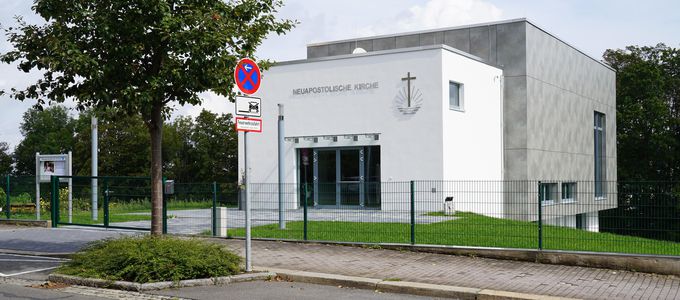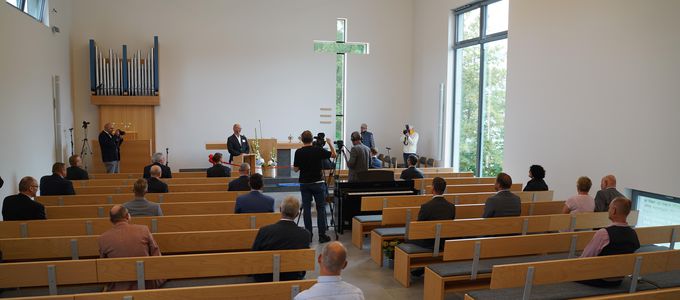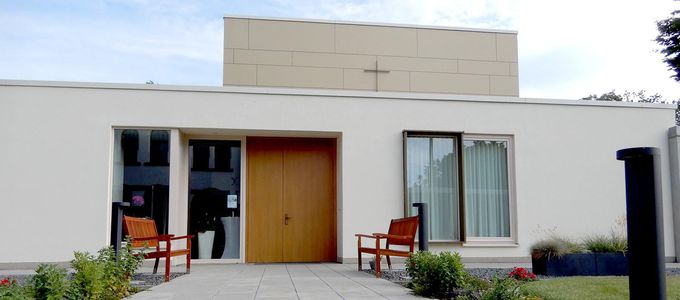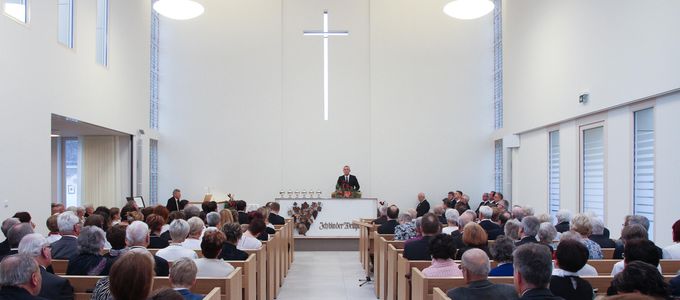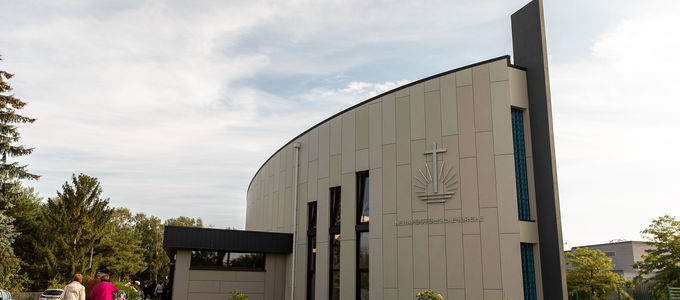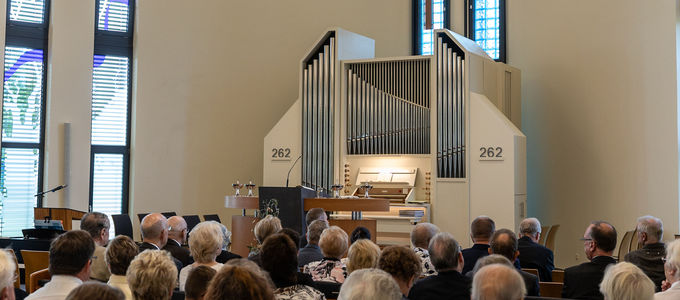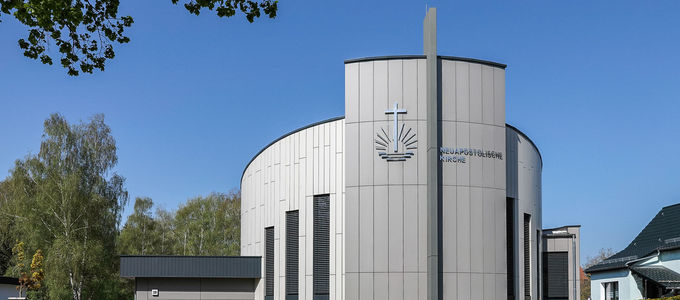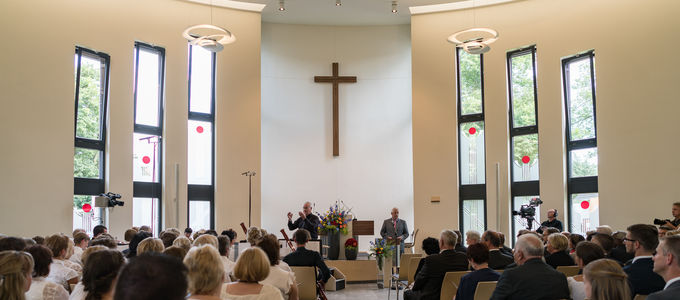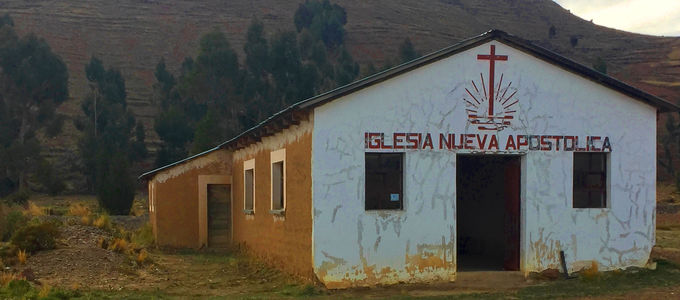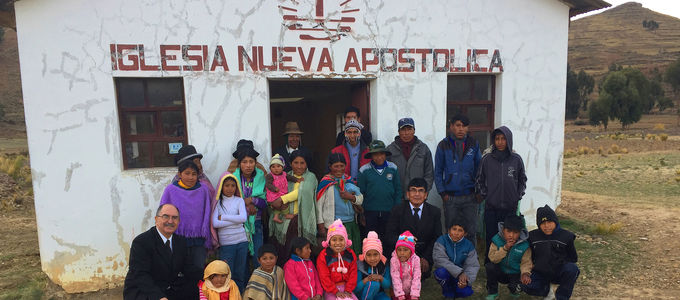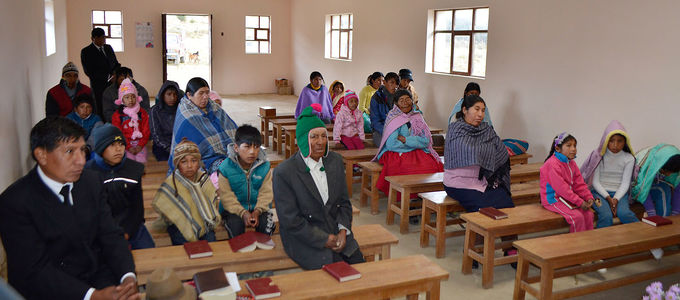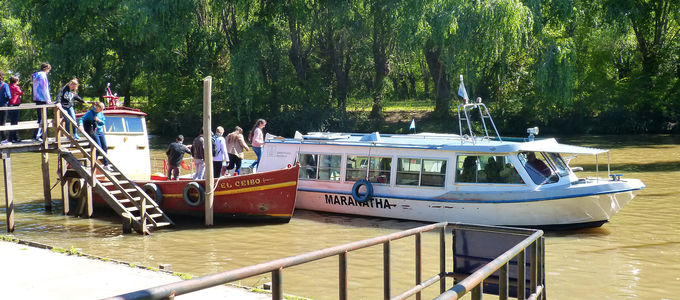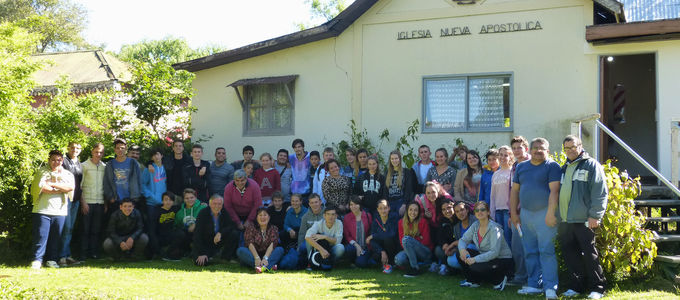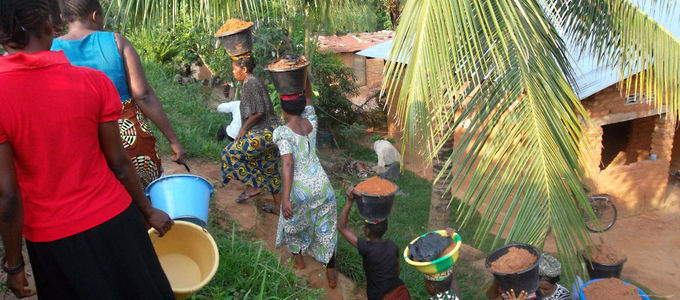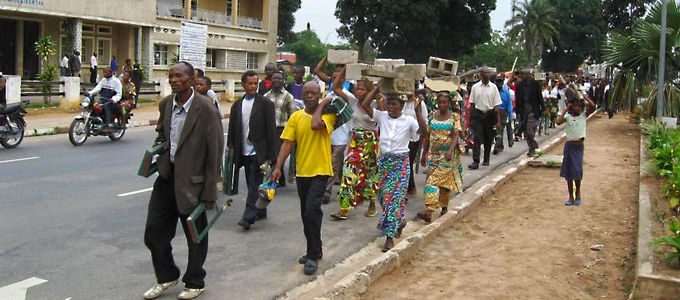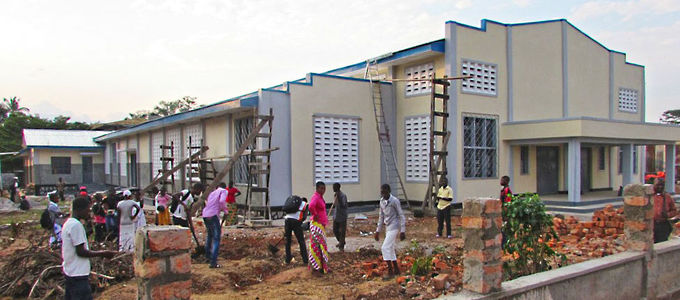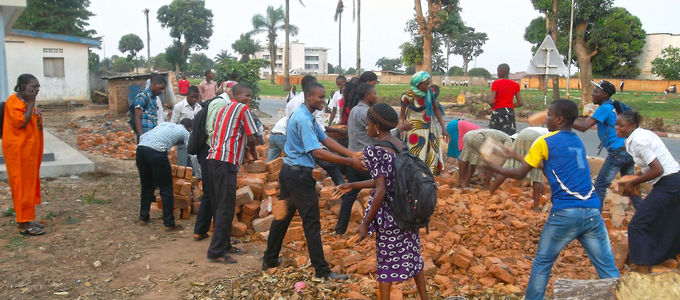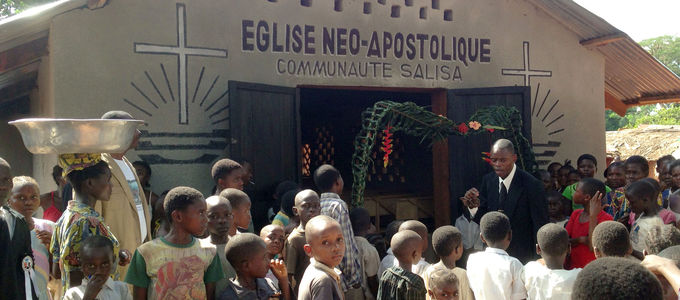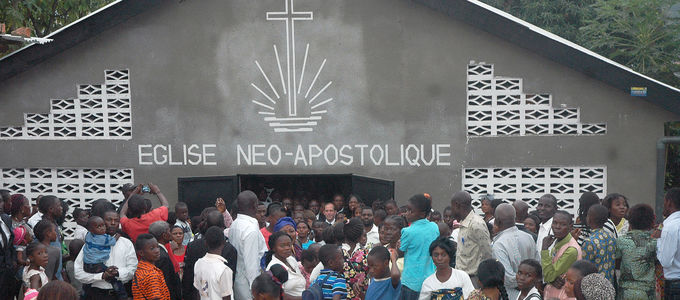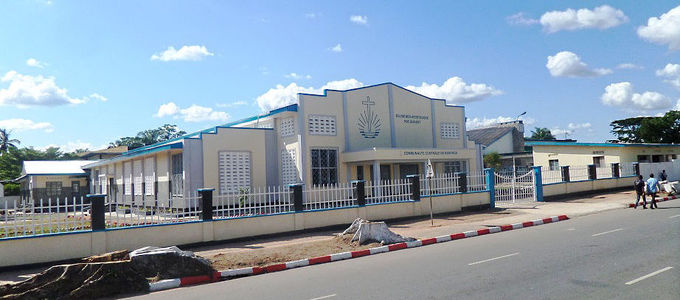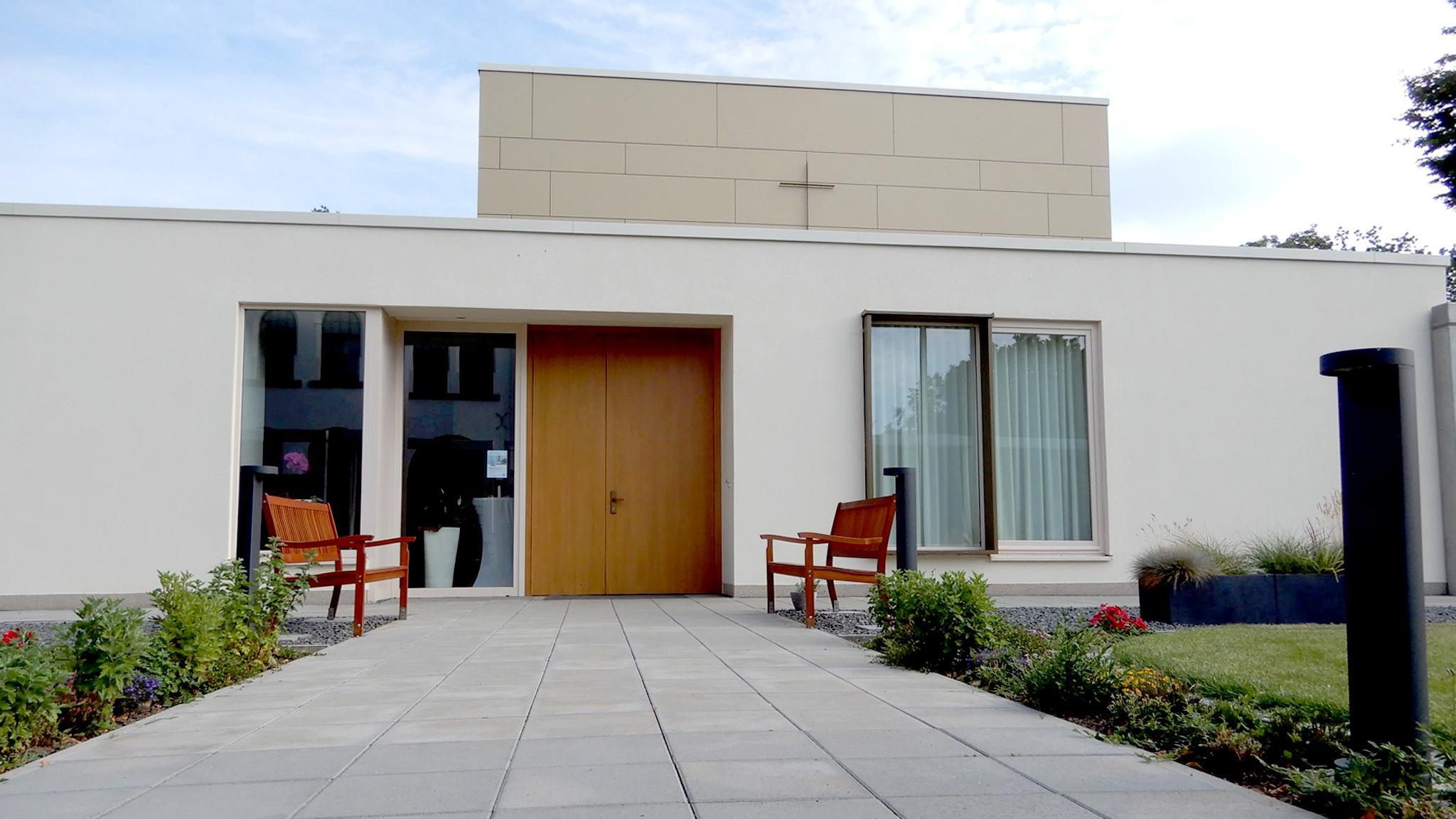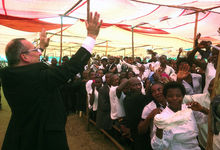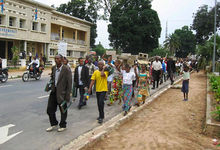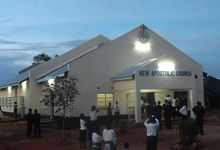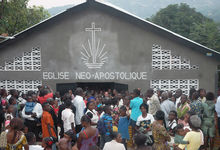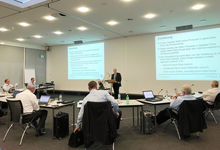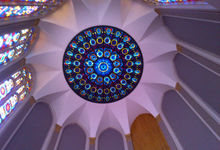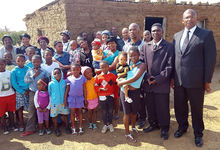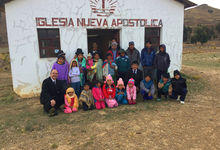Church construction is a community effort
There are many New Apostolic congregations who still harbour the wish for their very own church building. With a support programme worth a few million and some personal initiative, such a dream can indeed come true for many.
For Christians the church building is a place of worship, teaching, and fellowship. The sacred place provides a space for prayers, sermons, sacramental acts, and music. But this space also has to be created and maintained. With approximately 58,500 New Apostolic congregations around the world, this represents a huge undertaking.
While some are concerned about reducing maintenance and operating costs, others dream of finally having their own place of worship for the first time. For decades, church construction has also been a topic that has featured significantly with the District Apostle Meeting. The District Churches support one another within a framework of joint funding programmes. Most recently, the District Apostle Meeting passed corresponding resolutions about church construction in Europe in 2018 and 2015. Last week, nak.org reported on the success of these support programmes to date. District Apostle Rainer Storck (Western Germany), who tracks the programme’s progress on behalf of the European District Apostle Meeting, relates: “We are happy when one project after the other can gradually be completed and our local brothers and sisters can move into their new or freshly renovated building and come to love it. That makes all the effort worthwhile.” The aim of all these endeavours is to provide churchgoers with a space that is tailored to their needs, while at the same time reducing future maintenance and operating costs.
Churches big and small
From an international perspective, the differences between the many church buildings and church construction activities could not possibly be any greater: some congregations are located in the heart of large metropolitan areas, where members only have a few hundred metres to walk to church, while others are located in distant rural districts that can only be reached after exhausting day-long hikes or boat trips. Some of our members assemble in enormous church buildings with seating for as many as 4,000 people, while other congregations consist of only a handful of believers who gather to worship under a simple corrugated iron roof in structures without walls, windows, or doors.
And there are also major differences when it comes to construction activities. In some countries, church construction is the province of specialised companies, where the local building authorities set the standards. In other regions, however, churches can be built by the local members themselves. In some cases this can be difficult, for example, when construction materials need to be dragged through the mountain reaches of Nepal—a process that requires months and involves many long hours on rough and steep paths. Sometimes, on the other hand, things move very quickly, owing to the participation of many members, for example, when a church building in a Congolese mountain village is completed in only four weeks.
Financial support from a little to a lot
These efforts remain a challenge everywhere. For some it is a fight just to keep their church building from being swept away by floods—and they must often resort to dismantling their building brick by brick, carrying it away to another location, and building it back up again. Others lack sufficient building materials to support their personal initiative: in some cases, they must first produce and fire the bricks they require on their own.
And then there are always more general questions and difficulties for which solutions must be found. In an interview two years ago, Chief Apostle Jean-Luc Schneider explained, “We have adapted our church construction policies accordingly: in Africa, for example, we are no longer building large churches whose maintenance costs would barely be possible for future generations to afford. In other regions, we are adapting the number of churches and actual locations of congregations to suit our current needs. After all, construction and maintenance are becoming more and more expensive everywhere.”
Ultimately, there is also another factor to consider, namely the financial resources. The European and North American District Churches are the so-called donor churches, as they support most of the other District Churches around the world. In response to the question of how this will develop in the future, the international Church leader remains optimistic: “I hope things will go well. However, in contrast to past endeavours, we want to make the subsidies granted to the local, financially non-self-sustaining District Churches more project-related. The financially stronger donor District Churches are to make their global contribution by financing clearly defined projects. Even if financial independence is not a foreseeable reality in the medium term in some countries, we must continue our efforts to adjust local expenditure to revenues.”
A combined effort: whether next door or across continents
As is evident from the published annual reports of many District Apostle areas, church construction is subsidised in the areas they serve abroad. After all, not every District Church has the resources to independently finance church construction, teaching materials, and other expenditures. It is on such occasions that the responsible District Apostle area steps in—or, as has been successfully demonstrated in Europe for a number of years now, several District Apostle areas come together to provide the necessary assistance.
In two separate incarnations, the Support Programme for Church Construction in Europe (SPCCE) has been responsible for completing or initiating a large number of renovations, refurbishments, and new buildings over the past twelve years. A total of 7.35 million euros is available for renovation measures, along with another 17.65 million euros for new buildings. This merely serves as one example of the countless other church construction projects underway around the world.
No matter what the local church looks like, it is and remains a home for Christians. One young sister summed it up nicely in a comment on a nac.today report about the personal commitment of our members in church building: “It just goes to show that any challenge can be overcome when people work together!”
Article info
Author:
Date:
Keywords:
Oliver Rütten
26.01.2021
dedication/inauguration,
laying of the foundation stone,
International,
Congregational life


